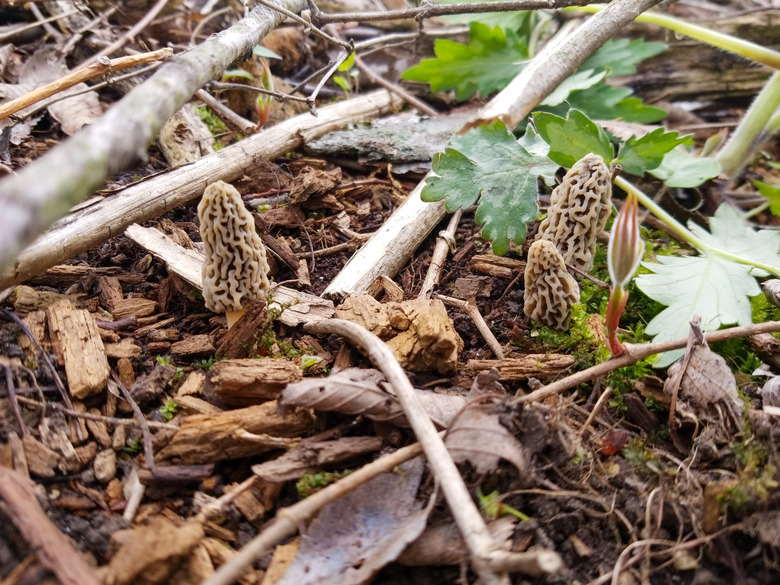How To Identify Wild Mushrooms In Tennessee
Hunting for wild mushrooms in Tennessee can be a fun way to get outside and add some local flavor to a delicious home cooked meal. But foraging comes with its own dangers, since some types of wild mushrooms contain toxins that can lead to conditions including headaches, vomiting, liver, kidney failure and even death. Before you go, arm yourself with information about the state's most delicious, non-toxic mushrooms.
TL;DR (Too Long; Didn't Read)
Before you forage for delicious wild mushrooms in Tennessee, figure out where to look for some of the tastiest varieties and how to protect yourself from potentially dangerous ones.
Munch on Morels
Munch on Morels
Morels are one of the most popular wild mushrooms in the United States for good reason. First, they have a delicious, woodsy flavor that can work in even the simplest of recipes. They're also great for beginner mushroom hunters, since they're relatively widespread and easy to identify.
These mushrooms have a conical shape, with the conical part attaching to the stem near the ground. The conical part of a morel looks sponge-like, similar to the appearance of sea coral. In the early part of morel season, they could be as small as a thimble, but later on in the year you might be lucky enough to find some as big as soda cans. If you spot a mushroom that looks like it could be a morel but the conical part doesn't spread down to near the bottom of the stem, stay away. It's a false morel and could cause stomach problems if consumed.
Hunt for morels during the first few weeks of spring, when nighttime temperatures have been above 50 degrees for a string of four or five days. If it's been raining lately, you'll be in luck, since morels love wet conditions. Start by looking in the ground near trees, especially decaying sycamore, hickory, ash, elm or fruit trees. Areas with sandy soil like creeks and riverbeds can also be morel hotspots.
Find the Chicken
Find the Chicken
Another fun wild mushroom to hunt down in Tennessee is the Laetiprous mushroom, more commonly known by names like sulphur shelf, the chicken mushroom or the hen of the woods. It's given that name not just because its yellowish, ruffled edges makes it look a little bit like hen feathers, but also because when cooked properly, they can have the texture and flavor of real chicken, but some describe it more like a meaty seafood such as lobster.
You can find chicken mushrooms from spring to fall. Look for them growing in clusters at the base of dead or dying trees, particularly oak, cherry or beech trees. The top part of the mushroom is normally a yellow color, hence the nickname of sulphur shelf, while the underbelly is usually white.
Don’t Risk It
Don't Risk It
Even after reading a handy guide to Tennessee's mushrooms, you may find yourself face to face with a mushroom you don't recognize. Don't take any risks when it comes to these potentially toxic plants. If you're not absolutely sure you know what type of mushroom you see, leave it alone. Even the tastiest mushroom is not worth jeopardizing your health.
Cite This Article
MLA
Dragani, Rachelle. "How To Identify Wild Mushrooms In Tennessee" sciencing.com, https://www.sciencing.com/identify-wild-mushrooms-tennessee-8289648/. 22 November 2019.
APA
Dragani, Rachelle. (2019, November 22). How To Identify Wild Mushrooms In Tennessee. sciencing.com. Retrieved from https://www.sciencing.com/identify-wild-mushrooms-tennessee-8289648/
Chicago
Dragani, Rachelle. How To Identify Wild Mushrooms In Tennessee last modified March 24, 2022. https://www.sciencing.com/identify-wild-mushrooms-tennessee-8289648/
